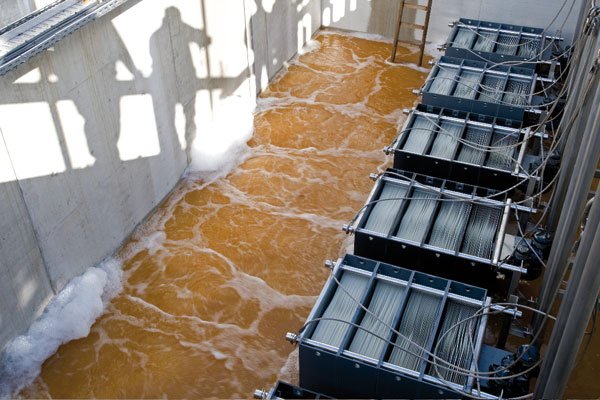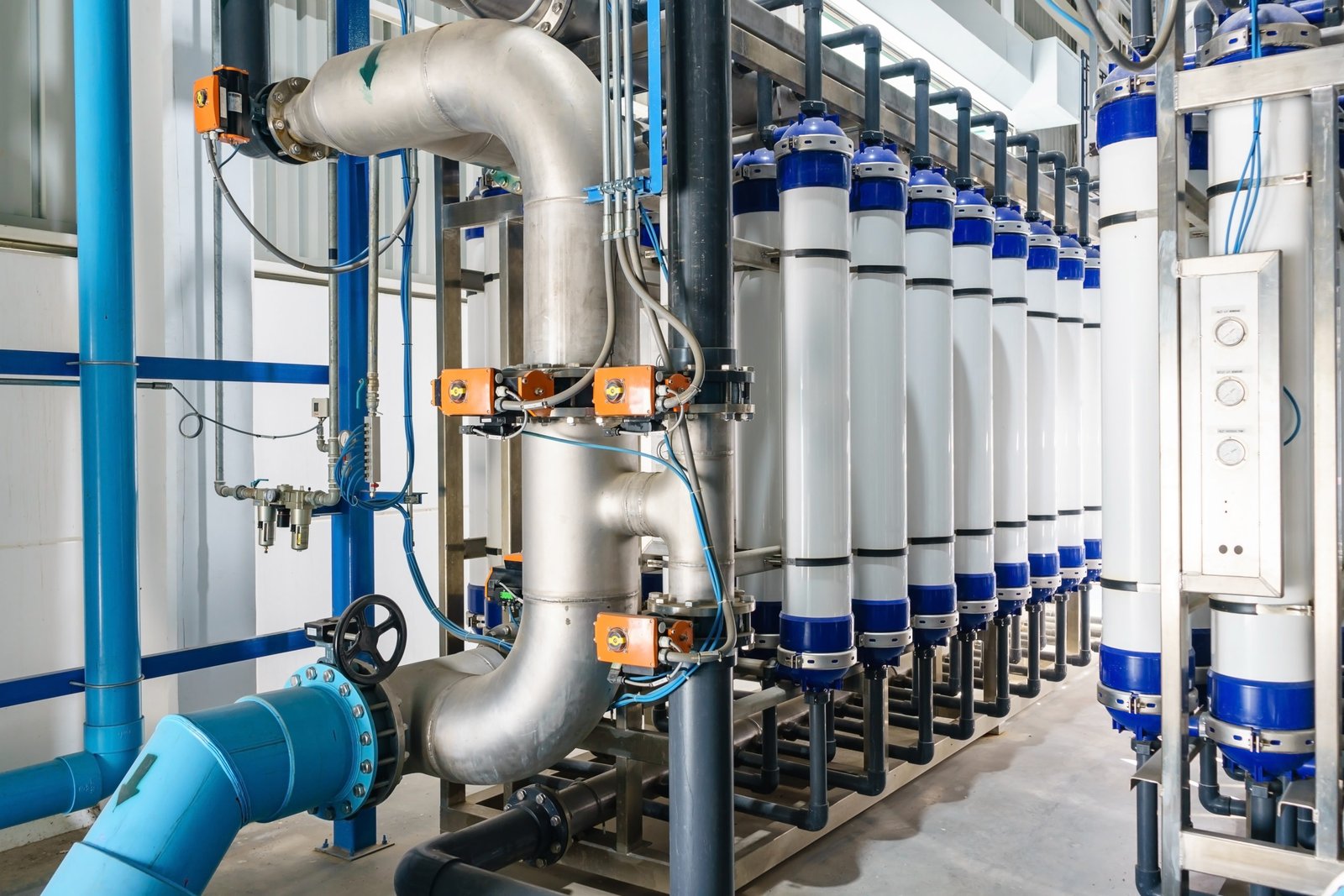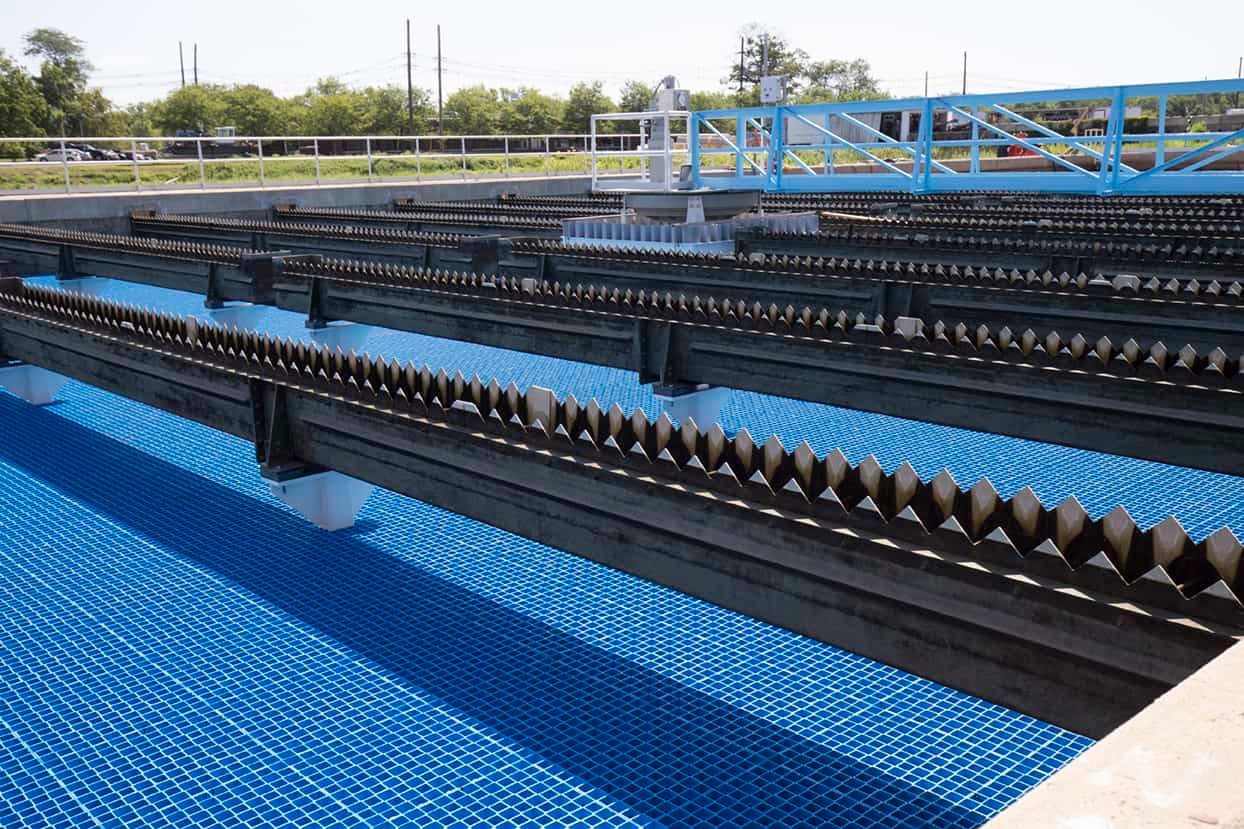Membrane Filtration in Wastewater Treatment: Advancements and Efficiency

Membrane filtration has emerged as a critical technology in wastewater treatment, serving as a frontline process that allows for the separation of contaminants from water. It operates through a selective barrier—a membrane—that permits certain substances to pass through while others are retained. The importance of this technology stems from its ability to effectively remove a wide range of impurities, including microscopic organisms and particles, thereby ensuring the production of high-quality treated water.
Given its versatility, membrane filtration is implemented in various configurations and types, such as microfiltration, ultrafiltration, nanofiltration, and reverse osmosis. Each type is distinguished by the size of particles it can filter and is chosen based on specific treatment requirements. In addition to ensuring superior water quality, membrane filtration systems are increasingly designed with an emphasis on sustainability, aiming to minimize energy consumption and optimize operational efficiency.
Key Takeaways
- Membrane filtration is a selective process crucial for purifying wastewater.
- It encompasses different types of filtration suited to diverse treatment needs.
- Systems are tailored for sustainability and efficiency in modern applications.
Fundamentals of Membrane Filtration
Membrane filtration plays a critical role in wastewater treatment, effectively separating contaminants from water by employing a semi-permeable barrier.
Principles of Membrane Filtration
Membrane filtration operates on the concept of size exclusion or sieving. Water and small molecules pass through fine pores in the membrane, while larger particles, including bacteria and suspended solids, are retained. This process is driven by pressure or concentration gradients, and effectiveness is influenced by factors such as pore size, pressure, and the presence of fouling agents.
Membrane Materials and Types
Materials used for membranes typically include polymeric substances like polyvinylidene fluoride (PVDF) or cellulose acetate, and ceramics. Types of membranes found in wastewater treatment include:
- Microfiltration (MF): Removes particles in the range of approximately 0.1 to 10 micrometers.
- Ultrafiltration (UF): Targets molecules and particles sized 0.01 to 0.1 micrometers, such as viruses and proteins.
- Nanofiltration (NF): Filters out smaller particles and divalent ions.
- Reverse Osmosis (RO): Has the finest pores, excluding monovalent ions, organic molecules, and water.
Membrane Configuration
Membrane configurations are designed to maximize efficiency and minimize space. Common configurations include:
- Flat Sheet: Sheets are stacked, promoting high packing density but requiring more extensive cleaning.
- Hollow Fiber: Features a bundle of narrow, straw-like membranes providing a large surface area for treatment in a compact form.
- Tubular: Comprises larger tubes, beneficial for handling high-fouling wastewaters but with lower packing density.
Each configuration has implications for flow dynamics, cleaning protocols, and application suitability.
Membrane Filtration Processes
Membrane filtration processes are vital components in modern wastewater treatment. They serve as critical barriers, allowing for the separation of particulates and contaminants from water at varying molecular sizes.
Microfiltration
Microfiltration (MF) utilizes membranes with pore sizes typically ranging from 0.1 to 10 micrometers. This process effectively removes bacteria, suspended solids, and some high-molecular-weight substances from wastewater. They operate under low pressure and are commonly used as a pre-treatment step before finer filtration processes.
Ultrafiltration
Ultrafiltration (UF) employs membranes with smaller pores, typically from 0.01 to 0.1 micrometers. It is designed to remove macromolecules, viruses, and a range of colloids from water. UF processes require slightly higher pressures than MF but less than nanofiltration or reverse osmosis, balancing efficiency with energy consumption.
Nanofiltration
Nanofiltration (NF) is a process that features pore sizes around 0.001 micrometers. It is capable of removing divalent ions, such as calcium and magnesium, making it useful for water softening applications. NF can also effectively reduce organic molecules and colorants, which makes it a valuable process in treating industrial wastewater.
Reverse Osmosis
Reverse Osmosis (RO) is the finest level of filtration among these processes, with no distinct pore size, as it relies on a dense membrane. RO is designed for the reduction of dissolved salts, molecules, and ions. This process requires the highest pressure, but it produces the cleanest water, removing up to 99% of all contaminants, including monovalent ions such as sodium and chloride, which are not typically captured by NF.
Applications of Membrane Filtration in Wastewater
Membrane filtration has become a cornerstone in wastewater treatment, offering precise separation and purification capabilities. It plays a crucial role in various applications by providing a barrier to contaminants while allowing clean water to pass through.
Industrial Wastewater Treatment
In industrial wastewater treatment, membrane filtration is employed to remove a wide range of pollutants, including heavy metals, organic compounds, and fine particulates. Industries such as chemical manufacturing, mining, and food processing use these systems to comply with stringent effluent quality requirements. They help in reducing the environmental impact and protect water resources.
Municipal Wastewater Treatment
For municipal wastewater treatment plants, membrane filters are integral in the secondary and tertiary treatment stages. They are designed to extract microorganisms, suspended solids, and emerging contaminants, thus ensuring the effluent meets public health and environmental standards before being discharged into natural water bodies or reused.
Reclaimed Water Reuse
Reclaimed water reuse benefits from membrane filtration by enabling the recycling of wastewater for non-potable purposes such as irrigation, industrial cooling, and toilet flushing. The technology is essential in water-scarce regions as it conserves fresh water supplies and reduces the dependency on the traditional water sources.
Process Water Production
In generating process water, which requires a high degree of purity, membrane filtration systems are indispensable. They are used across various sectors, such as pharmaceuticals and electronics manufacturing, to produce ultra-clean water needed in sensitive production and testing processes.
Design Considerations for Membrane Filtration Systems
When engineering a membrane filtration system for wastewater treatment, careful consideration must be given to the specific requirements of the process. Factors including the choice of process, pore size of the membranes, overall system capacity, and protocols for maintenance and cleaning must align with the unique demands of a wastewater environment.
Process Selection
Selecting the appropriate membrane filtration process is critical to addressing the particular contaminants present in wastewater. Options such as reverse osmosis, nanofiltration, ultrafiltration, and microfiltration each target different pollutant sizes and types. The choice will depend on factors like feed water quality and desired quality of treated water.
Membrane Pore Size
The pore size of a membrane determines which particles and molecules can be filtered out of the wastewater. For instance, larger pores might be sufficient for suspended solids, while smaller pores would be needed to remove bacteria, viruses, and dissolved organic compounds. This decision impacts both the effectiveness of the system and its operational costs.
System Capacity
The capacity of a membrane filtration system must reflect the volume of wastewater treated within a set period. This includes accommodating peak flow rates and ensuring the system design is scalable for future demands. High-capacity systems might employ multiple modules or a series of membranes to manage greater volumes efficiently.
Maintenance and Cleaning
A well-planned approach to maintenance and cleaning is essential for the longevity of membrane filtration systems. This includes routine monitoring, cleaning protocols to prevent fouling, and easy access to components for servicing. Measures such as backwashing, air scouring, and the use of chemical cleaning agents keep membranes performing optimally.
By attentively addressing these design considerations, a membrane filtration system can be effectively integrated into wastewater treatment protocols, offering robust purification to meet regulatory standards and environmental goals.
Operational Challenges and Solutions
Effective membrane filtration in wastewater treatment faces several operational challenges that can hinder its performance and efficiency. Addressing these issues is crucial for maintaining water quality standards and prolonging the service life of the filtration system.
Fouling Prevention
Fouling, the accumulation of particles and organisms on membrane surfaces, is a significant challenge. To prevent this, operators implement pre-treatment processes such as sedimentation or coagulation to reduce the load on the membranes. Periodic backwashing and chemical cleaning are also employed to maintain optimal flow rates through the membranes.
Membrane Lifespan
The lifespan of a membrane is contingent upon material integrity and resistance to harsh cleaning chemicals. One solution involves using durable membrane materials that can withstand frequent cleaning cycles. Scheduled maintenance and careful monitoring can also extend membrane life and ensure consistent treatment performance.
Energy Efficiency
Membrane bioreactors, although effective, can be energy-intensive. Solutions to improve energy efficiency include adopting innovative technologies like low-energy membranes and optimizing operational parameters such as aeration rates and membrane flux, which can lead to substantial energy savings.
Waste Management
Handling the waste generated from membrane filtration requires thoughtful planning. Spent membranes and residual sludge are addressed by incorporating waste reduction techniques like sludge minimization technologies and recycling of used membranes, whenever possible, to lower the environmental impact of waste disposal.
Recent Advances and Future Trends
Recent developments in membrane filtration for wastewater treatment focus on enhancing efficiency, reducing costs, and mitigating the environmental impact. These advancements pave the way for innovative materials, optimized processes, and increased sustainability, all within a context shaped by evolving regulations and policies.
Innovative Membrane Materials
Researchers are actively developing novel membrane materials that demonstrate improved selectivity and permeability. These materials promise to address the perennial challenge of membrane fouling, which compromises member efficiency. For instance, the utilization of graphene-based nanomaterials and biomimetic membranes has shown potential in increasing resistance to pollutants. Advancements have also been observed in the synthesis approaches and structural properties of reverse osmosis and nanofiltration membranes, specifically designed to retain dissolved species such as heavy metals and inorganic salts.
Process Optimization
Process optimization in membrane technology is constantly evolving to enhance wastewater treatment outcomes. Key focus areas include the optimization of membrane bioreactors (MBRs) which offer advantages over conventional treatment methods by integrating biological degradation and membrane filtration. With the fine-tuning of operational parameters, these systems seek to maximize efficiency and extend membrane lifespan.
Sustainability Initiatives
Sustainability in membrane filtration technologies is gaining traction. Energy consumption is a significant factor, and current trends involve the development of low-energy membrane processes. Additionally, efforts to recycle and reuse water through advanced membrane technologies underscore the move towards circular economy models in wastewater management. These initiatives not only cut down on resource waste but also reduce the environmental footprint of wastewater treatment systems.
Regulatory and Policy Considerations
The implementation and advancement of membrane technologies in wastewater treatment are heavily influenced by regulatory frameworks. Governments are increasingly recognizing the importance of efficient and advanced wastewater treatment systems to public health and environmental protection, leading to stricter monitoring of antibiotic resistance genes and other contaminants. Regulatory agencies are expected to continue to shape the future of membrane filtration technology through standards and guidelines that promote innovation while protecting public and environmental health.
Case Studies and Real-world Applications
Membrane filtration has been implemented successfully in numerous wastewater treatment facilities worldwide. One such case is the Orange County Water District in California, where a state-of-the-art facility uses a combination of reverse osmosis and ultrafiltration to treat wastewater. This advanced process turns wastewater into high-purity water that replenishes groundwater basins.
In Singapore, the NEWater project stands out as a prime example of membrane technology use. Employing microfiltration, reverse osmosis, and ultraviolet disinfection, NEWater produces clean water from reclaimed water that supplies up to 40% of the nation’s water needs.
Another significant application is seen in the European Union, where membrane bioreactors (MBRs) are an integral part of wastewater treatment strategies. MBRs combine conventional biological treatment with membrane filtration to enhance water purity and allow for water reuse.
Key Benefits Identified:
- Improved Water Quality: Through the removal of a wide range of contaminants.
- Space Efficiency: Membrane systems require less space compared to traditional setups.
- Water Reuse: Treated water can be used for agricultural, industrial, and even drinking purposes.
| Location | Membrane Technology Used | Application |
|---|---|---|
| Orange County, California, USA | Reverse Osmosis, Ultrafiltration | Groundwater Replenishment |
| Singapore | Microfiltration, Reverse Osmosis | Water Supply |
| European Union | Membrane Bioreactors (MBR) | Wastewater Treatment |
These instances demonstrate the efficacy and adaptability of membrane filtration technologies in tackling the challenges of modern wastewater management.
Frequently Asked Questions
What is the principle behind the membrane filtration method used in wastewater treatment?
Membrane filtration in wastewater treatment operates on the principle of size exclusion or selective permeability. It separates substances on the molecular level, allowing water to pass through semipermeable membranes while contaminants are retained.
How do different types of membrane filtration systems operate in industrial wastewater management?
Different systems, such as granular activated carbon, ion exchange resins, and high-pressure membrane systems, are employed based on their suitability for removing specific contaminants. Each method has its own operational parameters tailored to treat industrial effluents effectively.
Can you explain the four primary membrane filtration techniques utilized in water and wastewater treatment?
The four primary techniques are microfiltration, ultrafiltration, nanofiltration, and reverse osmosis. Each technique is defined by the pore size of the membranes and thus the size of the particles they can remove, with microfiltration being the coarsest and reverse osmosis the finest.
What are some real-world applications of membrane filtration technology in wastewater treatment?
Membrane filtration is used in removing pathogens from municipal water supplies, treating industrial effluents, and even in the reclamation of water for reuse in processes or irrigation, demonstrating the technology's versatility.
How are innovations in membrane water treatment technologies impacting efficiency and sustainability in wastewater management?
Innovations, such as the development of more fouling-resistant membranes and energy-efficient filtration processes, are improving the efficiency and reducing the environmental impact of wastewater treatment, pushing the industry towards more sustainable practices.


